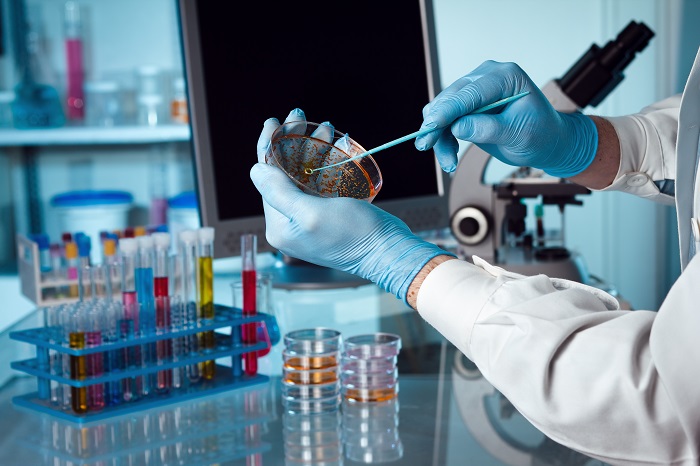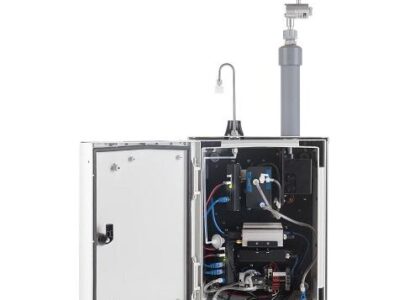
The global phytopathological disease diagnostics market is poised for significant growth, estimated to be worth around US$ 97.0 Million in 2022 and projected to reach a valuation of US$ 130.6 Million by 2029. According to market analysis, the sector is anticipated to experience a moderate Compound Annual Growth Rate (CAGR) of 4.3% between 2022 and 2029.
The rise in adoption of phytopathological disease diagnostics for early detection of multiple plant diseases is a key driver for market expansion. Recent advancements in plant pathology research have underscored the importance of these diagnostic technologies, which are increasingly utilized for accurate disease diagnosis in plants.
Request A Sample Report: https://www.futuremarketinsights.com/reports/sample/rep-gb-11079
At present, the phytopathological disease diagnostics market constitutes a 1.8% share in the global agricultural testing market, indicating its growing significance in ensuring crop health and productivity.
Regionally, Europe emerges as the most lucrative market for phytopathological disease diagnostics. This dominance is attributed to several factors including increasing research activities, adoption of advanced technologies, presence of leading market players, and growing awareness among stakeholders about the detrimental impact of plant diseases.
As the market continues to evolve, stakeholders including researchers, agricultural experts, and industry players are urged to leverage these diagnostic tools to mitigate the impact of plant diseases, safeguard crop yields, and ensure food security for the growing global population.
Key aspects of the phytopathological disease diagnostics market include:
- Diverse Diagnostic Techniques: There are numerous diagnostic techniques and tools available for identifying plant diseases, including molecular techniques (PCR, DNA sequencing), serological methods (ELISA), microscopy, and more.
- Rising Concerns About Crop Health: Increasing global population and food demand have heightened the importance of maintaining crop health. The detection and management of plant diseases are critical to ensuring food security and sustainable agriculture.
- Emerging Technologies: Advancements in biotechnology and genomics have led to the development of more accurate and rapid diagnostic tools. For example, techniques like Next-Generation Sequencing (NGS) and CRISPR-based methods have gained prominence.
- Market Players: Several companies and organizations are involved in the production and distribution of phytopathological disease diagnostics kits, equipment, and services. These include Agilent Technologies, Bio-Rad Laboratories, Thermo Fisher Scientific, and government agencies like the USDA (United States Department of Agriculture).
- Regional Variations: The prevalence of specific plant diseases and the demand for diagnostics can vary by region, depending on factors such as climate, crop types, and agricultural practices.
- Environmental Concerns: Growing environmental awareness has led to increased interest in sustainable and organic farming practices. This, in turn, has driven the need for accurate disease diagnostics to reduce the reliance on chemical treatments.
Our Customization Report: https://www.futuremarketinsights.com/customization-available/rep-gb-11079
Competitive Landscape:
Major players in the phytopathological disease diagnostics market have implemented a range of strategies, both organic and inorganic, to bolster their global footprint. These strategies include mergers, partnerships, new product launches, collaborations, and acquisitions.
For instance:
- In October 2021, Agdia, Inc. introduced a rapid, user-friendly DNA-based assay for detecting Quarantine bacteria, specifically Ralstonia Solanacearum, which poses a threat to numerous crops globally.
- In October 2020, Mologic Ltd., a prominent developer of lateral flow and rapid diagnostic technologies, unveiled its inaugural rapid diagnostic test, BotrytisAlert, targeting the fungal crop pathogen Botrytis.
- In January 2021, Agdia, Inc. announced the full commercialization of their new ELISA reagent Set designed for detecting tomato brown rugose fruit virus (ToBRFV).
Top of Form
Key Companies Profiled:
- ThermoFischer Scientific
- Clear Detections B.V
- Merck KGaA
- Agdia, Inc.
- Qualiplante SAS
Phytopathological Disease Diagnostics Market By Category:
Product:
- Kits
- ELISA Kits
- DNA-based Diagnostics Kits
- Protein-based Diagnostics Kits
- Lateral Flow Devices
- DNA/RNA Probes
- Accessories and Other Consumables
- Software and Cloud Databases
Test:
- Molecular Tests
- PCR-based Assays
- PCR & RT-PCR
- Multiplex PCR
- Isothermal Amplification Assays
- Microarray Assays
- NASBA
- LAMP Assays
- PCR-based Assays
- Serological Tests
- ELSIA
- TBIA
- QCMI
- Tests Using Electronic Technology
Sample Type:
- Seeds
- Grains
- Plants
- Trees
- Fruits
- Others
End User:
- Agricultural Laboratories
- Academic and Research Institutes
- Food Processing Laboratories
- Contract Research Organizations
- Others
Region:
- North America
- Latin America
- Europe
- East Asia
- South Asia
- Oceania
- Middle East & Asia (MEA)
Get a Purchase on the Report: https://www.futuremarketinsights.com/checkout/11079
About Future Market Insights (FMI)
Future Market Insights, Inc. (ESOMAR certified, recipient of the Stevie Award, and a member of the Greater New York Chamber of Commerce) offers profound insights into the driving factors that are boosting demand in the market. FMI stands as the leading global provider of market intelligence, advisory services, consulting, and events for the Packaging, Food and Beverage, Consumer Technology, Healthcare, Industrial, and Chemicals markets. With a vast team of over 400 analysts worldwide, FMI provides global, regional, and local expertise on diverse domains and industry trends across more than 110 countries.
Contact Us:
Future Market Insights Inc.
Christiana Corporate, 200 Continental Drive,
Suite 401, Newark, Delaware – 19713, USA
T: +1-845-579-5705
For Sales Enquiries: sales@futuremarketinsights.com
Website: https://www.futuremarketinsights.com
LinkedIn| Twitter| Blogs | YouTube



